Let the sunshine in!
The best things are always worth waiting and after a few months, the first images of the solar corona taken by Metis, the super coronagraph onboard the Solar Orbiter spacecraft launched in February to study the Sun, are finally released to the world!
What’s so special about this picture?
On May 15 2020, when Solar Orbiter was travelling at 0.6 Astronomical Units from the Sun (60% of the mean Earth-Sun distance), Metis acquired the first simultaneous images of the Sun corona in visible and UltraViolet light. To see the extremely faint coronal light, Metis produces an artificial solar eclipse. The black disk at the center of the images is created the occultation of the Sun disk, whose size and orientation is illustrated by the sphere superimposed in the middle of the occulted region. When Solar Orbiter will approach the minimum distance from the Sun (0.28 Astronomical Units) the solar disk size will be more than doubled, but still completely “eclipsed”.
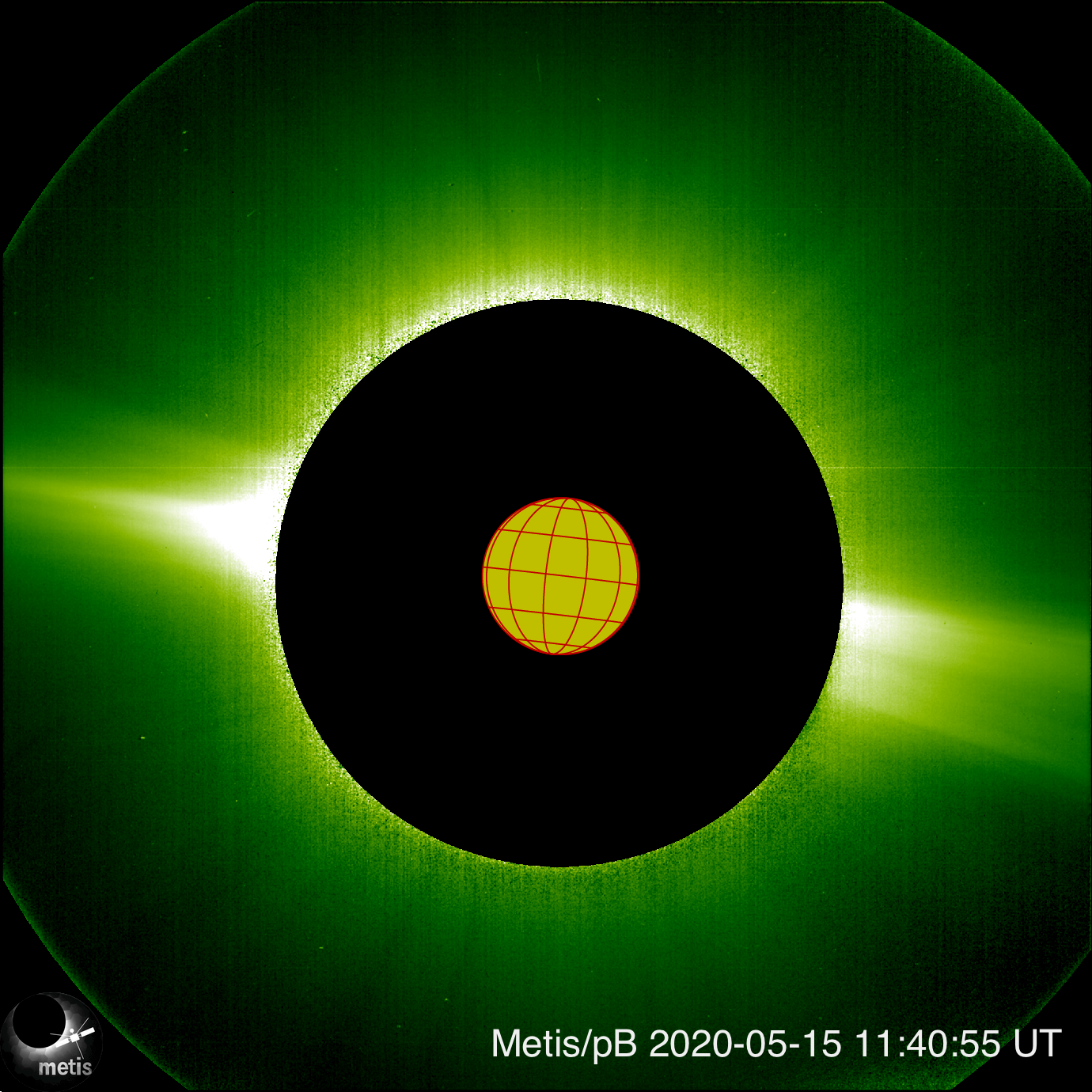
The image is taken in polarized visible light and clearly shows the characteristic configuration of the solar corona during the minimum phase of magnetic activity.
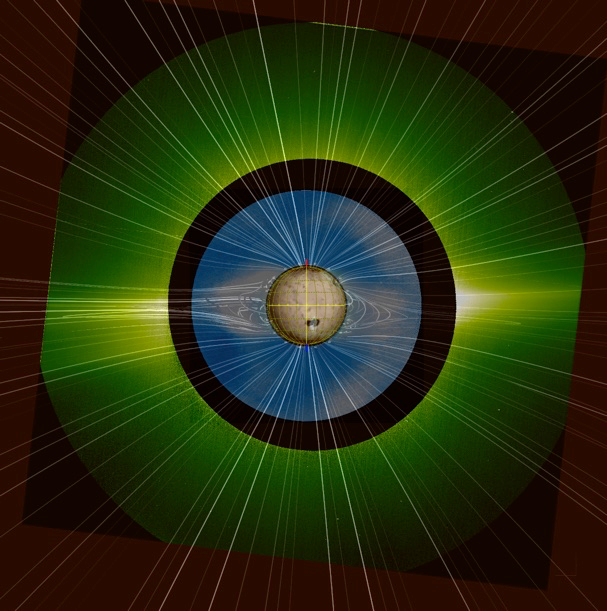
The solar magnetic field confines the coronal plasma mostly near the equatorial belt, where the field lines are closed, giving rise to the bright streamers, as shown by the image on the right where the map of the Sun magnetic field is superimposed to that of the Sun corona taken by Metis.
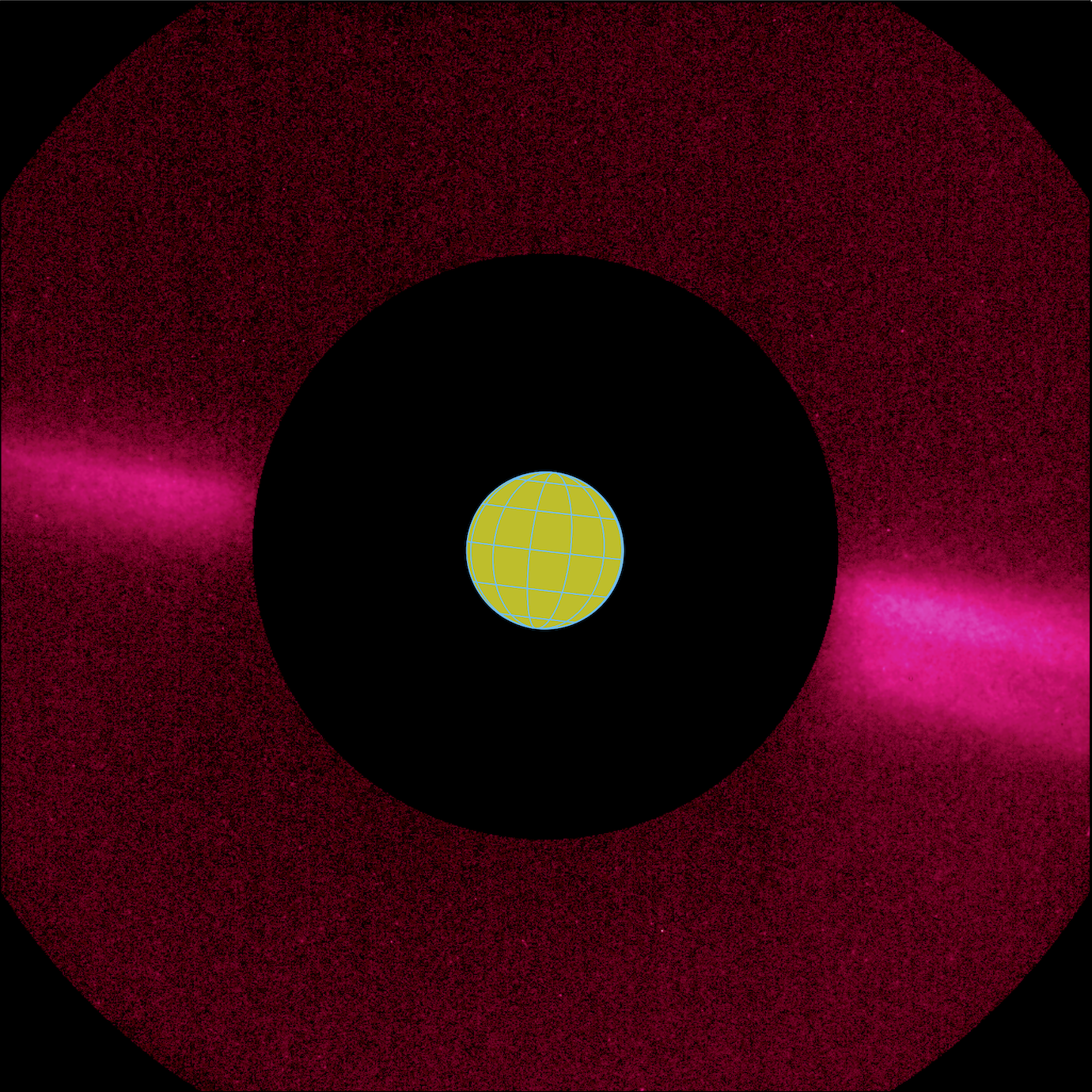
This first image taken by Metis in the UltraViolet (UV) light emitted from neutral hydrogen atoms represents also an absolute first: the UV Sun corona was never observed before in this region extending up to 7 solar radii from the solar center
They are the first images that will allow scientists to completely characterize the two most important plasma components in the Sun’s corona* and solar wind (electrons and protons). These images will help us answer fundamental questions about the origins of the fast and slow wind, the sources of solar energetic particles and the eruption and early changes in coronal mass ejections.
What’s so special about Metis?
Supplied by Thales Alenia Space as co-prime with OHB Italy, Metis will take simultaneous pictures of the corona in both visible and ultraviolet wavelengths. This will reveal unprecedented structural and dynamic details of the solar atmosphere in the range from 1.7 to about 9 solar radii from the Sun’s center, allowing scientists to investigate the link between the behavior of these regions and space weather in the inner Solar System.
These observations, based on the instruments’ unprecedented temporal coverage and spatial resolution, will enable us to study the structure and dynamic behavior of the corona and its features, finally disentangling their intrinsic characteristics from the effects of solar rotation.
Metis was proposed by an international scientific consortium led by Ester Antonucci from the INAF-Osservatorio Astrofisico di Torino (Turin Astrophysics Observatory), and is supported by the Italian space agency (ASI). The principal investigator is Marco Romoli, from the University of Florence.
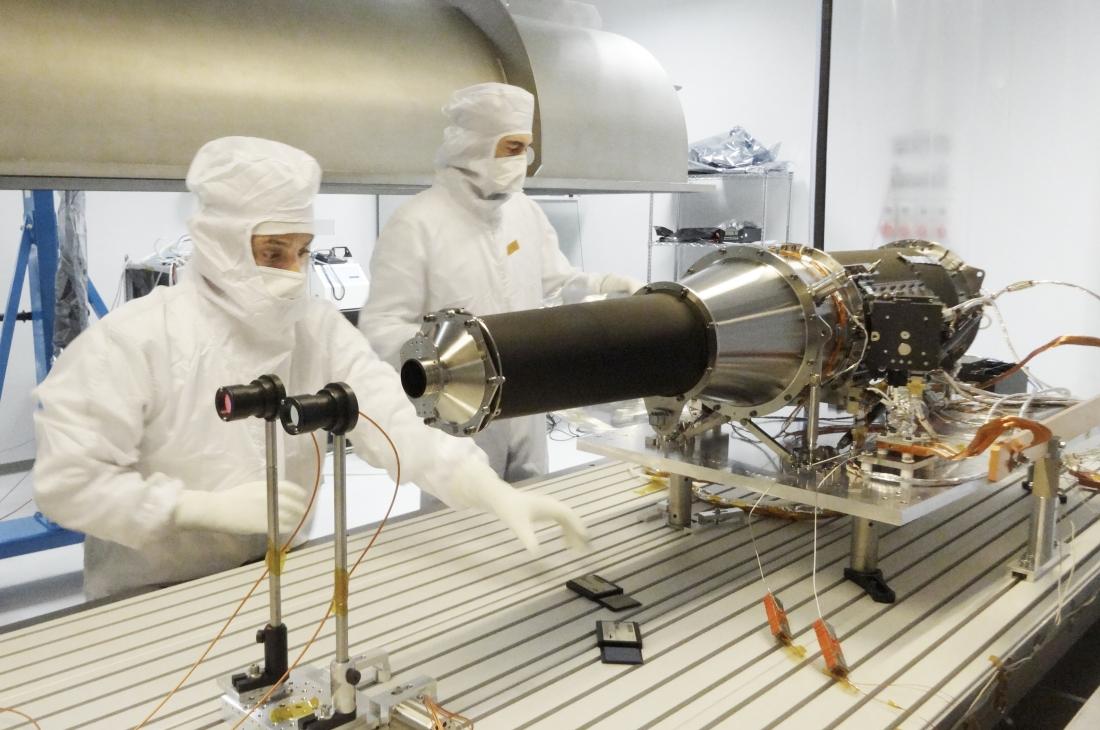
What will Metis discover about solar weather?
The solar wind, full of charged particles (electrons, protons and helium nuclei with energies between 1 and 10 KeV, moving at speeds from 250 to 750 km/sec.), flows from the solar corona towards outer space.
During solar storms, large quantities of matter are expelled from the Sun’s corona (coronal mass ejections), generating strong solar winds that subsequently disturb the Earth’s magnetosphere, ionosphere and terrestrial thermosphere, causing geomagnetic storms. Space weather is the study of these types of phenomena.
Measurements from Metis will help scientists completely characterize the most important plasma components in the corona and the solar wind. Studying this area is a key to determining the relationship between different solar atmosphere phenomena and how they change in the inner heliosphere. In fact, this is one of the Solar Orbiter’s fundamental science goals.
What’s so special about the Solar Orbiter mission?
The Solar Orbiter is part of the European Space Agency’s “Cosmic Vision” program. It is designed to perform unprecedented close-up observations of the Sun, including from high-latitudes, to provide the first images of the uncharted polar regions of the Sun. Because it will be operating so close to the Sun, this mission is a key to better understanding the heliosphere and its impact on Earth.
Solar Orbiter is a joint international space mission between ESA and NASA, using a spacecraft developed by Airbus Defence and Space. A number of partners from both industry and academia have contributed to the spacecraft and its scientific instruments, with Thales Alenia Space playing a critical role.
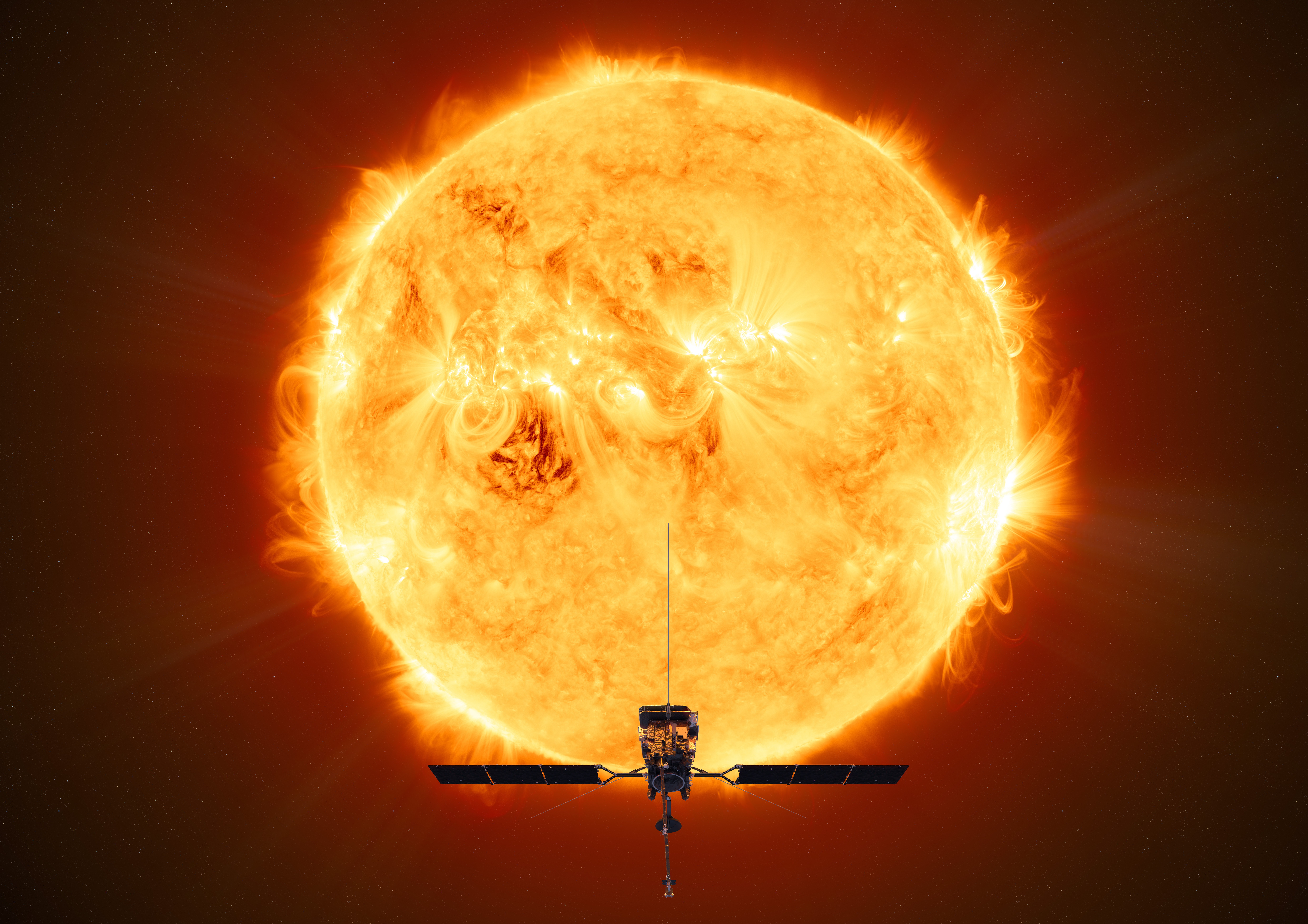
How will Solar Orbiter explore the Sun?
Solar Orbiter will reach its operational orbit in the innermost region of the Solar System in just over two years, after gravity-assisted boosts around Venus and Earth. It will observe the Sun from as close as 0.28 Astronomical Units (AU), i.e. 28% of the average distance between Earth and Sun, and at latitudes up to 34° above the solar equator.
The spacecraft is equipped with ten scientific instruments: six remote-sensing instruments to observe and take pictures of the Sun and four “in situ” instruments to measure the heliosphere environment around the spacecraft. During its seven-year mission, this sophisticated equipment will measure the solar wind plasma, magnetic field, electromagnetic and electrostatic waves, and energetic particles emitted by the Sun. It will also acquire spectacular images of solar features at an unprecedented resolution, including the complete characterization of solar corona – thanks to Metis!
How does the Solar Orbiter protect Metis and the other instruments?
Thales Alenia Space designed and built an innovative and highly efficient heat shield to protect the spacecraft and its instruments from the tremendous heat, while also giving them a direct view of the Sun. Its high-temp black painted shield is made of several protective layers of titanium and it is further isolated from the satellite by a combination of thermal blankets, an aluminum honeycomb core and titanium star brackets.
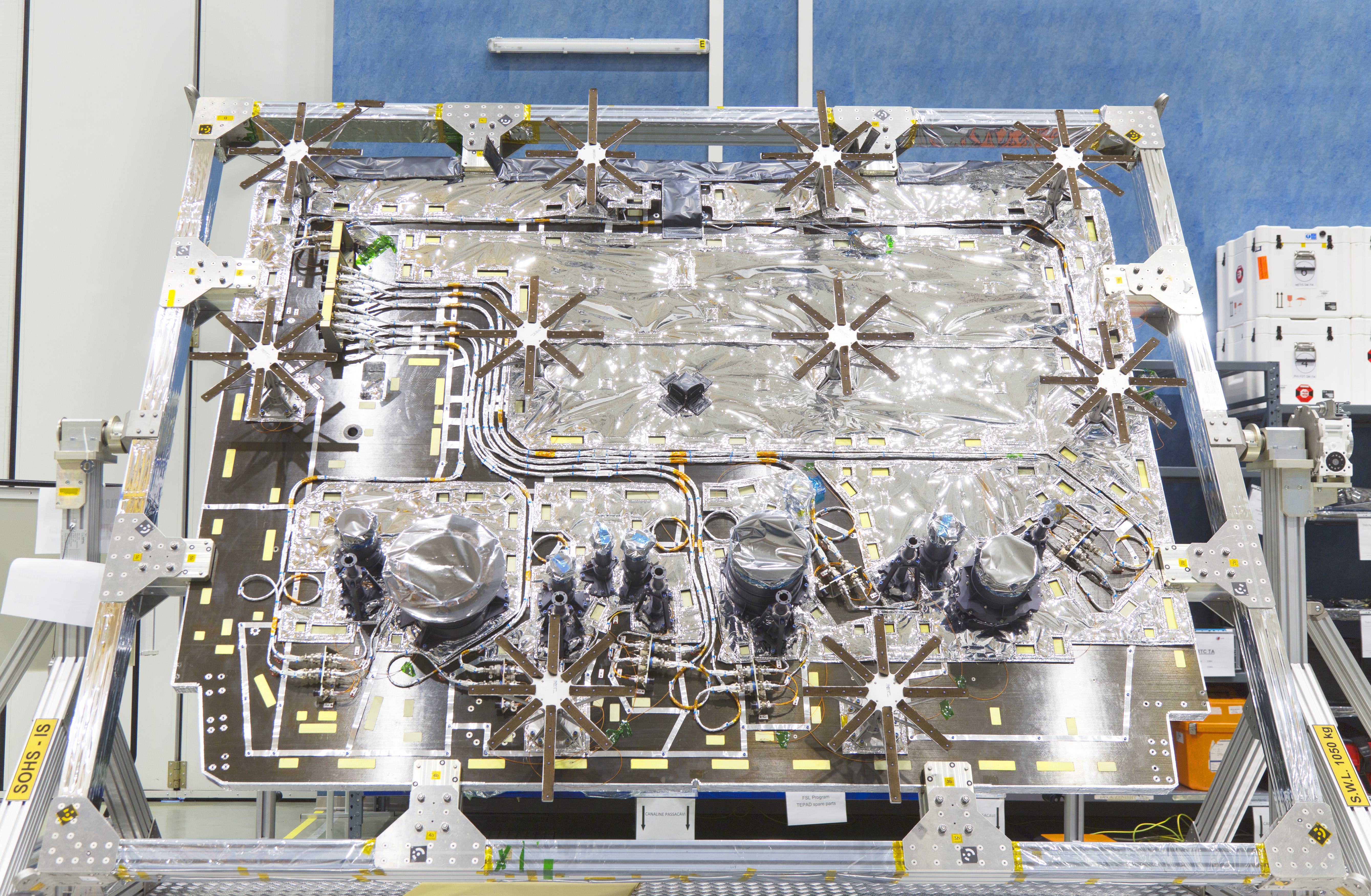
One stands alone
When you take a close look, you can see that all instruments are safely protected by the heat shield… all but one. Just one stands out and defies the fierce heat of the Sun – Metis!
We asked Stefano Cesare, Thales Alenia Space Program Manager for the Metis instrument, to explain:
Thales Alenia Space has also provided to the mission the Solid State Mass Memory (SSMM), the heart of on board data flow management, and the Deep Space Transponder, a very compact device that offers cutting-edge performance for telemetry and data. Solar Orbiter will be able to orientate and maintain itself in the correct orbit with the help of Leonardo's star trackers (AA-STR).


